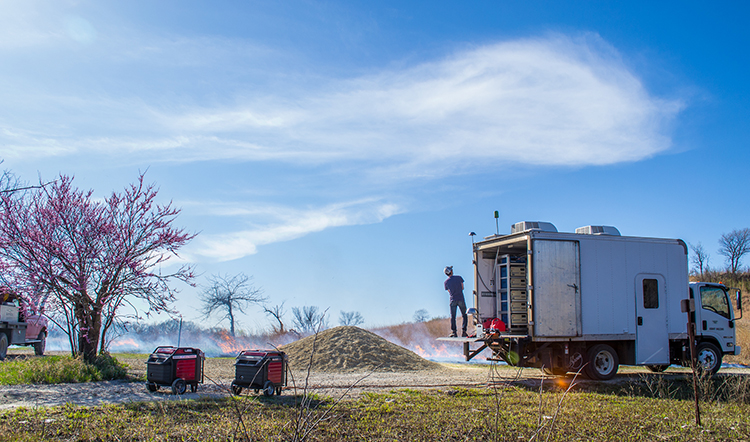Gregory Schill and colleagues study fires to resolve ice question in climate models
When fossil fuel or biomass burns, soot – also known as black carbon – fills the air. Black carbon is an important short-term climate driver because it absorbs solar energy and can affect the formation and composition of clouds.
The extent of black carbon’s impact on clouds has been the subject of debate for 30 years. A study recently published by Colorado State University atmospheric scientists aims to settle the debate and improve climate models.
Previous studies done in the laboratory conflicted on whether black carbon was effective at ice nucleation, a process important to cloud formation. Soot particles, like other types of aerosol particles in the air, can act as the foundation for ice crystal growth. Lab results on soot ranged wildly from no ice nucleation activity to efficient ice formation.
“One reason these results could span such a range is that combustion processes that form black carbon are extremely complicated and differ depending on fuels burned, and on whether combustion is carefully controlled, as in a diesel engine, or uncontrolled, as in wildfires,” said Gregory Schill, first author on the study and a former NSF postdoctoral research fellow in the Department of Atmospheric Science.
Read the full Source article, “CSU atmospheric scientists study fires to resolve ice question in climate models.”
Photo at top: Gregory Schill samples a prescribed burn in the CSU Mobile Laboratory at the Konza Prairie Biological Station in the Flint Hills of Kansas. Credit: Barb van Syke



